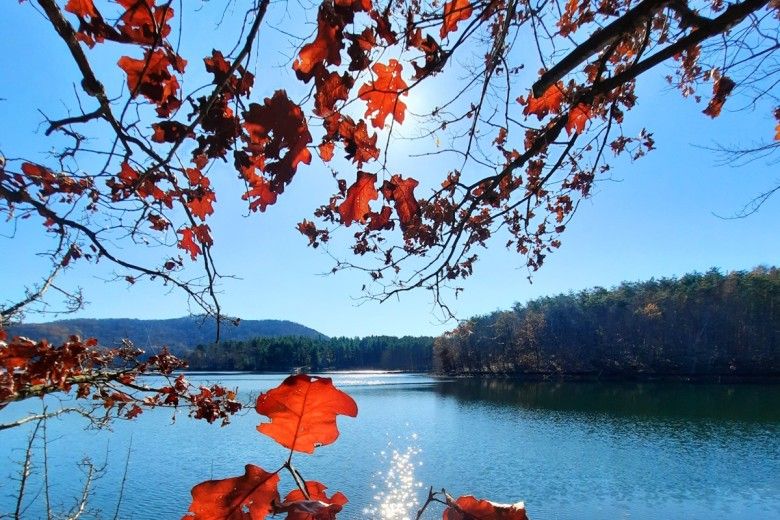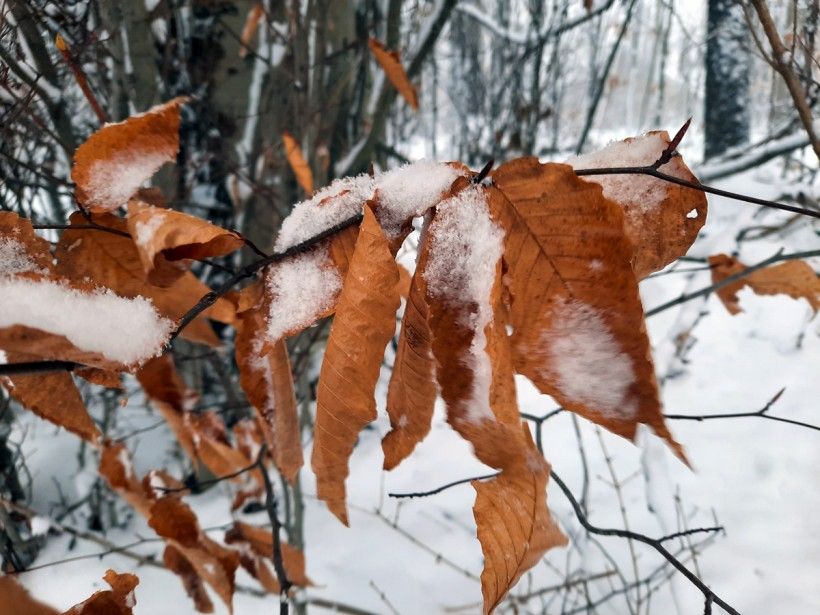Leaves that won't get lost

As I gazed upon the white mantle of snow that fell on the first day of December in Western Pennsylvania, the dull gray/brown of the tree trunks and limbs stood in stark contrast to the flippant bronze leaves waving in the wind. Why do some trees, like beeches and oaks, hold on to their leaves well past the time that others have dropped all of theirs?
The retention of leaves that normally fall is called marcescence. Certain species exhibit this trait, like beeches, oaks, hornbeams and witch hazel. More often, it is seen on the young trees of these species, in the understory where they are somewhat sheltered from weather and wind. Some, but not all, trees outgrow this phenomenon.
Little known fact: near where the petiole—or the base of the leaf stem—attaches to a branch, leaves have an abscission layer. In this layer are special cells that slowly close—when triggered to do so by the change in temperature and sunlight—until the layer closes completely, essentially cutting off circulation to the leaf, which dies and normally falls off. Cells on the branch form a band-aid where the leaf was attached to protect the tree from water loss and prevent the introduction of pests or fungus. With marcescence, that abscission layer doesn’t fully close, allowing leaves to hang on until severe weather or leaf bud in the spring causes them to drop. Note, an early cold snap can disrupt the process by which leaves fall, causing some species, like maples, to hang on to their leaves longer than normal.

The theory that intrigues me the most is that these trees hold on to their leaves so that they don’t decompose until they are shed in the spring—when nutrients are most needed for growth. The newly fallen leaves provide a punch of fertilizer as well as mulch, with the latter helping to retain soil moisture. Nutrient cycling is very important in a forest ecosystem, with the fallen leaves decomposing near the tree, releasing carbon, phosphorous, nitrogen, calcium and other elements back into the soil. The roots will then absorb and utilize these nutrients for tree growth, which kicks off in the spring.
Additional theories are that the leaves insulate the tree from cold temperatures or trap moisture that will be crucial for spring growth. Whatever the reason, we have marcescence to thank for the splashes of color in a deciduous forest. At the very least, we have a new vocabulary word!
Photos by Melissa Reckner